Updated: 17-Nov-2021
Emile Regnier manufactured measurement equipment when in 1930 he installed a section in Versailles to manufacture aircraft engines.
-He started by acquiring DeHavilland's licenses for the Gipsy III, Major and Six engines.
The Gipsy-Regnier III was one of the first engines to manufacture. It gave 105 CV at 2,000 rpm.
-However, he would start his own engine line, highly influenced by these DH engines.
-Except the Regnier R1 and R2 with two opposed horizontal offset cylinders, that gave 30 CV at 4,500 rpm the former and 63 CV at 2,600 rpm the latter. There was also the R2T.

“Regnier R1”
-We received a photograph of the Regnier II (or 2).
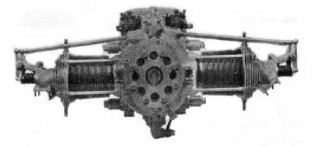
“Regnier 2 (R2 or II)”
-The power was 57 CV at 2,400 rpm and 63 CV at 2,600 rpm.
-The normal operating regime is 2,250 rpm. It had double ignition.
-In 1934 SFCA joined the group and a new family of 4 and 6 cylinders began to be produced.
-In 1934, the R4B gave 140 CV and was derived from the Gipsy Major.

“Regnier R4B”
-The following year, in 1935 the R6B comes out, with 180 CV, with six cylinders, of course.

“Regnier R6B”
-A variant of this engine, with a Roots compressor for supercharging, the C version, would reach 250 CV of power.
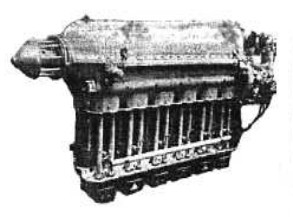
“Regnier R6, compressorless”
-The mechanical supercharging provided by this compressor could increase the power up to 310 CV, as happens in successive versions.
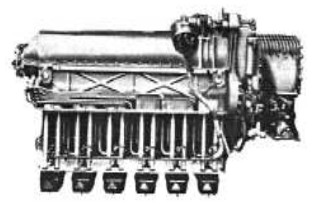
“Regnier R6, 310 CV”
-In the above illustration we see the compressed air distribution ducts for starting and the distributor in front of the engine, on the camshaft, just below the crankshaft.
-But the most striking thing about the R6 was that there was a winner. An R6 engine, was installed on a Caudron C-366 that was piloted by Massette at the 1934 Deutsch de la Meurthe Cup.

“Regnier R6 of the Caudron C-366”
-The most curious thing is that with just over 200 CV it beats competitors with powers of up to 700 CV.
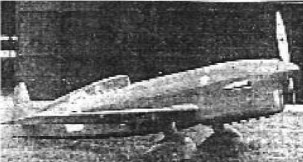
“Caudron C-366”
-The R4s would continue to evolve, but taking into account the market to be covered in light aviation, in 1936, they would lower power, size and weight, like the 90 CV R4E.

“Regnier R4E”
-The 60 CV R4DO, the 78 CV R4D2 and the 105 CV R4ED.

“Regnier R4DO”
-Below we show an ad from the Regnier engine era.
-We can see the initials SAEER = Societé Anonime Etablissements Emile Regnier.
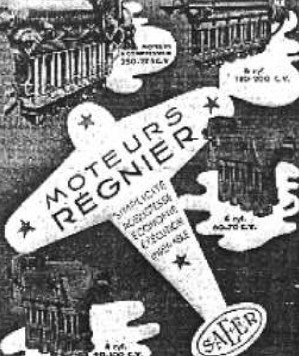
“Regnier engines advertisement”
-It is clear that there was a break with the line of previous engines based on the DeHavilland. It is the rocker box covers that immediately change the look.

“Regnier R4DO”
-In 1936, a small engine appeared, the 2T01, giving 24 CV at 4,000 rpm, of which there is no image, but which would presumably be a two-cylinder.
-In 1938, the R4FO giving 160 CV at 2,500 rpm, and the R6GO with Roots compressor and a power of 270 CV follow.

“Regnier R4KO”
-The R4KO gave 100 CV, while the smaller R4JO gave 75 CV.
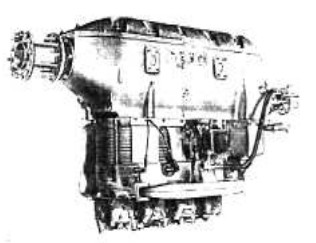
“Regnier 4L”

“Regnier 4LO”
-After WWII, it was absorbed by the Snecma group in 1947, where engines such as the 4L, the 145 CV 4L14, the 170 CV 4L22 or the 170 CV LO, LO2, etc. continue to appear.
-Not enough news is available on the 420 CV Regnier 12HOO on the Holste 20 aircraft, that participated in the Deutsch de la Meurthe Cup.
-Between 1938 and 1939, Regnier made a 12-cylinder inverted-V, the 12H 0 and 00, giving 400 CV.

“Regnier 12 H 00 drawing”
-Here a traceability notice by indicating that the Regnier 4L was made under license in the USA by Allied Aviation Corp, of Van Nuys, CA. (see).
From Appendix 6: Another photograph seen from the rear allows us to see the “Roots” type supercharger with the carburetor on its left and the outlet on its right, towards the cylinders. It is the 12 Vars engine.

“Sobrealimentador del Regnier”
-The R12G gave 900 CV (2xR12?).
-The R-161 had a Roots compressor and was derived from the R6C.
From Appendix 10: Regnier's Catalog of the 4 and 6 cylinder engines.

“Regnier 6-cylinder, 185/200 CV”
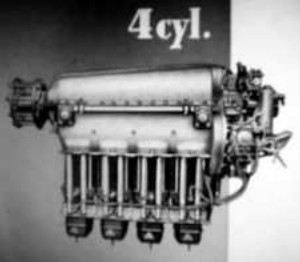
“Regnier 4-cylinder, 120/135 CV”
From Appendix 12: We localized illustrations of engines that are not included in the main text.
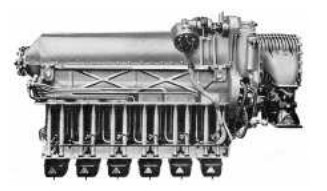
“Supercharged 6-cylinder engine”
-The 6-cylinder is the R6C with a Roots type mechanical supercharger. It gave 250 CV.

“Front view of the same engine”
-The general appearance of the engine is the same for the R4Lo1 and -o2 90 CV, which appeared later.
Engines of REGNIER
Model: 12C
Arquitecture:
Cooling:
Total Displacement:
Bore / Stroke: x
Power:
Weight:
Model: 12G 900CV
Arquitecture:
Cooling:
Total Displacement:
Bore / Stroke: x
Power:
Weight:
Model: 12H.O, -H.OO
Arquitecture:
Cooling:
Total Displacement:
Bore / Stroke: x
Power:
Weight:
Model: 4F.0
Arquitecture:
Cooling:
Total Displacement:
Bore / Stroke: x
Power:
Weight:
Model: 4L,-14,-22,-0,-02
Arquitecture:
Cooling:
Total Displacement:
Bore / Stroke: x
Power:
Weight:
Model: R1
Arquitecture:
Cooling:
Total Displacement:
Bore / Stroke: x
Power:
Weight:
Model: R2
Arquitecture:
Cooling:
Total Displacement:
Bore / Stroke: x
Power:
Weight:
Model: R4
Arquitecture:
Cooling:
Total Displacement:
Bore / Stroke: x
Power:
Weight:
Model: R4B (Gipsy Major Lic.)
Arquitecture:
Cooling:
Total Displacement:
Bore / Stroke: x
Power:
Weight:
Model: R4D, -DO, -D2, -KD, -JO
Arquitecture:
Cooling:
Total Displacement:
Bore / Stroke: x
Power:
Weight:
Model: R4E, -ED
Arquitecture:
Cooling:
Total Displacement:
Bore / Stroke: x
Power:
Weight:
Model: R6
Arquitecture:
Cooling:
Total Displacement:
Bore / Stroke: x
Power:
Weight:
Model: R6B
Arquitecture:
Cooling:
Total Displacement:
Bore / Stroke: x
Power:
Weight:
Model: R6C
Arquitecture:
Cooling:
Total Displacement:
Bore / Stroke: x
Power:
Weight:
Model: RIII (Gipsy III, Lic.)
Arquitecture:
Cooling:
Total Displacement:
Bore / Stroke: x
Power:
Weight:


